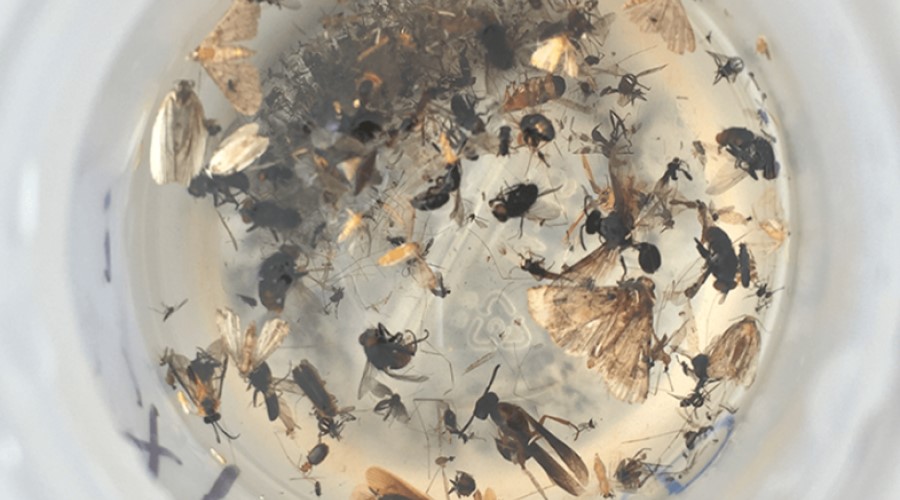Dr. Laura van Dijk tells us about the research published in her new Proceedings B paper, a study that investigated factors affecting insect biomass in both a temperate and tropical region.

Insects play essential roles in our ecosystems, yet we know very little about the spatial and seasonal distribution of insect biomass. A new study in Proceedings B examined the effects of temperatures on insect biomass. Lead author, Laura van Dijk, from the Swedish Museum of Natural History, tells us more about this work.
Summary of the paper
Insects form the main part of global biodiversity, and are essential in providing numerous ecosystem functions. Several studies have reported alarming declines of insect biomass over time, yet we still know little about the drivers behind the spatial and seasonal dynamics of insects. In our study, we enlisted the help of 191 volunteers and park guards in managing 245 malaise traps for a full year across both Madagascar and Sweden. Through this massive sampling effort here achieved, we were able to quantify spatiotemporal patterns in insect availability. Surprisingly, we found that the total insect biomass per trap was similar between the tropical and temperate zone. In Sweden, the spatial distribution of flying insect biomass was positively related to local variation in temperature, but not so within Madagascar. Across the year, the seasonal distribution of insect biomass proved vastly different between the temperate and tropical zone. Nonetheless, the drivers behind the seasonal dynamics partly converged between zones, with the overall seasonality of insects attributable to temperature and water availability. Our findings provide valuable insights into the spatial and seasonal availability of insects in a temperate and tropical region, and are key to predicting future scenarios of insect biomass declines in response to global change.
This study was initiated as part of the Insect Biome Atlas project, an ambitious project aimed at systematically characterizing the full insect biodiversity across Sweden and Madagascar. Samples were collected weekly to monthly during a full year (2019), resulting in the collection of 4749 samples in Sweden and 2566 samples in Madagascar. This rich and unique dataset allowed us to model the spatial and seasonal distribution of insects in Sweden and Madagascar with unparralled temporal and spatial resolution.
About the authors
Given the interdisciplinary nature of the study, and the massive field campaign across two regions, the authors are a diverse bunch of scientists from Sweden and Madagascar, with expertise ranging from the logistics of fieldwork through lab measurements and statistical analyses to ecology.
How did the idea of the paper come together?
The overall aim of the Insect Biome Atlas project focuses on species diversity and community composition, but all of a sudden, we realized that we lack insights into one of the more basic metrics of insect communities: the patterns and drivers of the spatial and seasonal distribution of insect biomass.


Proceedings B is looking to publish more high-quality research articles and reviews in ecology. If you have an idea for a review, we strongly encourage you to submit a proposal by completing our proposal template and sending it to the journal. More information about the journal and the submission process can be found on our website.
-----------------------------------------------------------
Image credits:
1. Christina Lynggaard
2. Eric Tsiriniaina Rajoulison
3. Oscar Engelbrektsson
